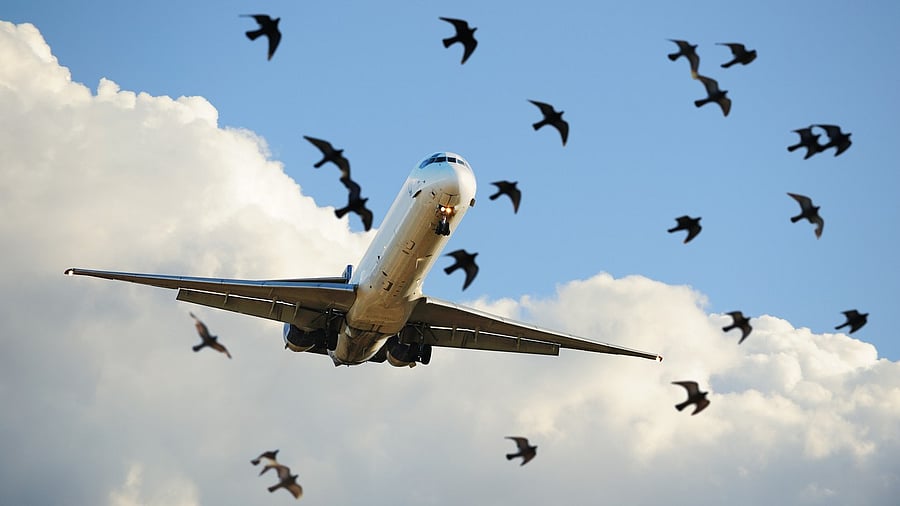
Image showing a flock of birds in front of a plane. For representational purposes.
Credit: iStock Photo
New Delhi: Around 2,800 incidents of bird-hits were reported from ten major airports over the past five-and-half-years from 2020, with Delhi, Mumbai and Bengaluru topping the list.
The Delhi airport reported the highest number of 695 bird-hit cases between 2020 and this year till June, followed by Mumbai with 407 and Bengaluru with 343. Ahmedabad is a close fourth with 337 incidents while Hyderabad is a distant fifth.
Chennai (205), Kolkata (193), Bhubaneshwar (150), Pune (145) and Thiruvananthapuram (125) were also among the top-ten airports vis-a-vis bird-hit incidents.
An analysis of data shared by the Ministry of Civil Aviation tabled in Rajya Sabha last week showed that such incidents were less in 2020 and 2021 when airline services were less owing to Covid-19 restrictions compared to the succeeding years.
While 309 incidents were reported in 2020, the number rose to 354 in 2021 and 588 in 2022. It further rose to 709 in 2023 but declined to 609 last year. In this year, till June, 238 incidents were reported.
Every year, the Delhi airport reported the highest number of such incidents – 62 in 2020, 94 in 2021, 183 in 2022, 185 in 2023, 130 in 2024 and 41 this year till June. For the Bengaluru airport, the figures were 29, 22, 84, 85, 88 and 35.
In a written reply to AAP MP Swati Maliwal, Minister of State for Civil Aviation Murlidhar Mohol said the Civil Aviation Requirement (CAR) mandates development of a Wildlife Hazard Management Plan (WHMP) to ensure safety of aircraft operations.
As per the WHMP, a range of proactive steps have been implemented by airport operators and local authorities to mitigate bird-hit and wildlife strike incidents.
The Delhi International Airport Limited (DIAL) has implemented a number of measures over the last few years leveraging new technology, equipment and methodology, including bird repellant and rodent control measures, habitat and insect management, biological and chemical control methods, and awareness and collaboration initiatives.
